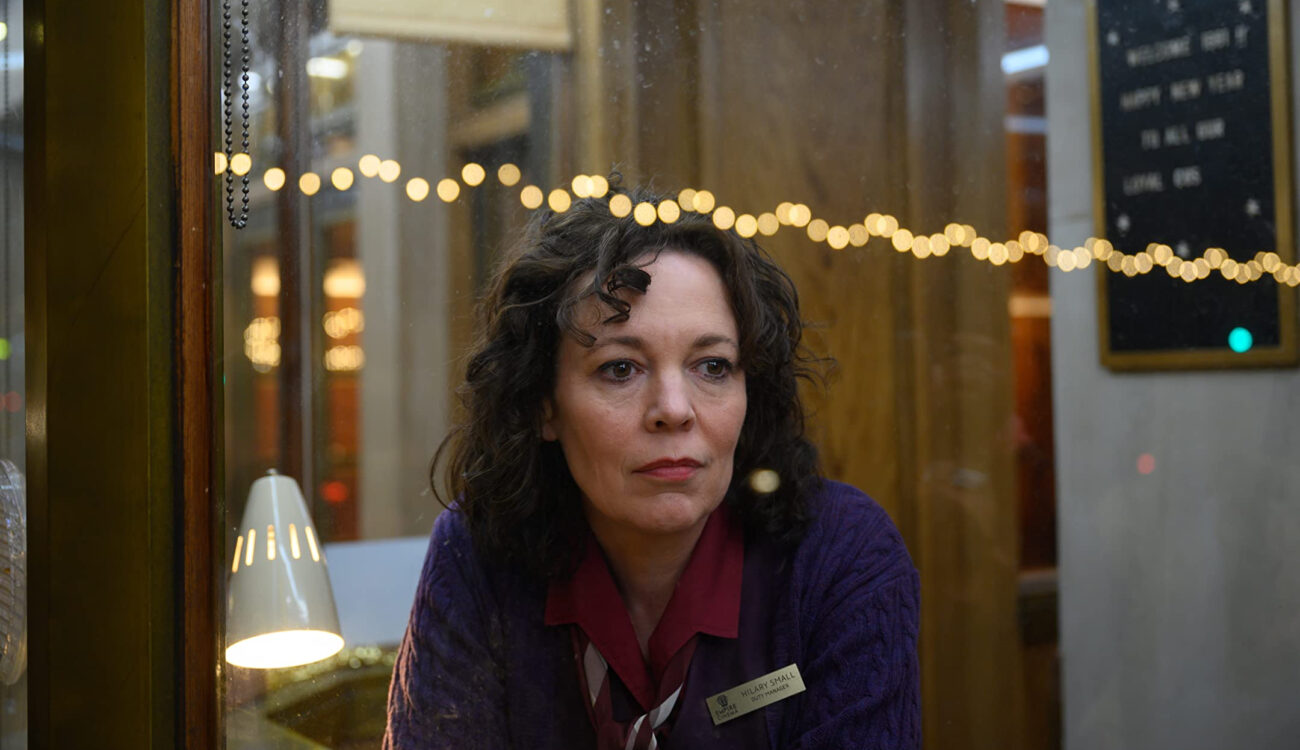
The 95th Academy Awards are coming up this week and we continue to look at some of the nominees. Among them is legendary cinematographer Roger Deakins, who has earned his 16th Oscar nomination for his last collaboration with Sam Mendes on “Empire of Light”. The film received mixed critical reviews and only a modest amount of festival recognition. It should be interesting to dive into how the subtle cinematography of Roger Deakins reveals its powers to illuminate a rather average—as some reviewers call it—story.
“Spark between the carbons makes the light. And nothing happens without light.” A quote from the film explains cinema projection principles, but it also reminds us that there is invariably much more beneath the surface. That’s true for “Empire of Light” as well. Yes, it’s a character-driven drama about the lonely, middle-aged, cinema manager Hilary (performed by Olivia Colman), but it also touches on mental health problems, sexual exploitation, gender equality, and even on racism in Great Britain in the early 80s. This is a story about ordinary people in turbulent real-life situations, and that’s where the intimate and subtle cinematography of Roger Deakins performs wonders. How so? Let’s look more closely.
Classic approach to the cinematography on Empire of Light
“Empire of Light” is nothing like the last work of Deakins and Mendes “1917” – an Award-winning World War I drama, which was made to look like a one-take movie. As the director explains in his interview with “American Cinematographer”, this time they deliberately decided on shooting scenes more conventionally. And that’s how it looks: in the composed “Empire of Light”, Deakins did nothing new or eccentric to reinvent camera moves, or to introduce an extraordinary color palette. He didn’t need to: the classic approach was the best decision for this quiet and slow-paced story. Why would he get an Oscar nomination for this, you may ask?
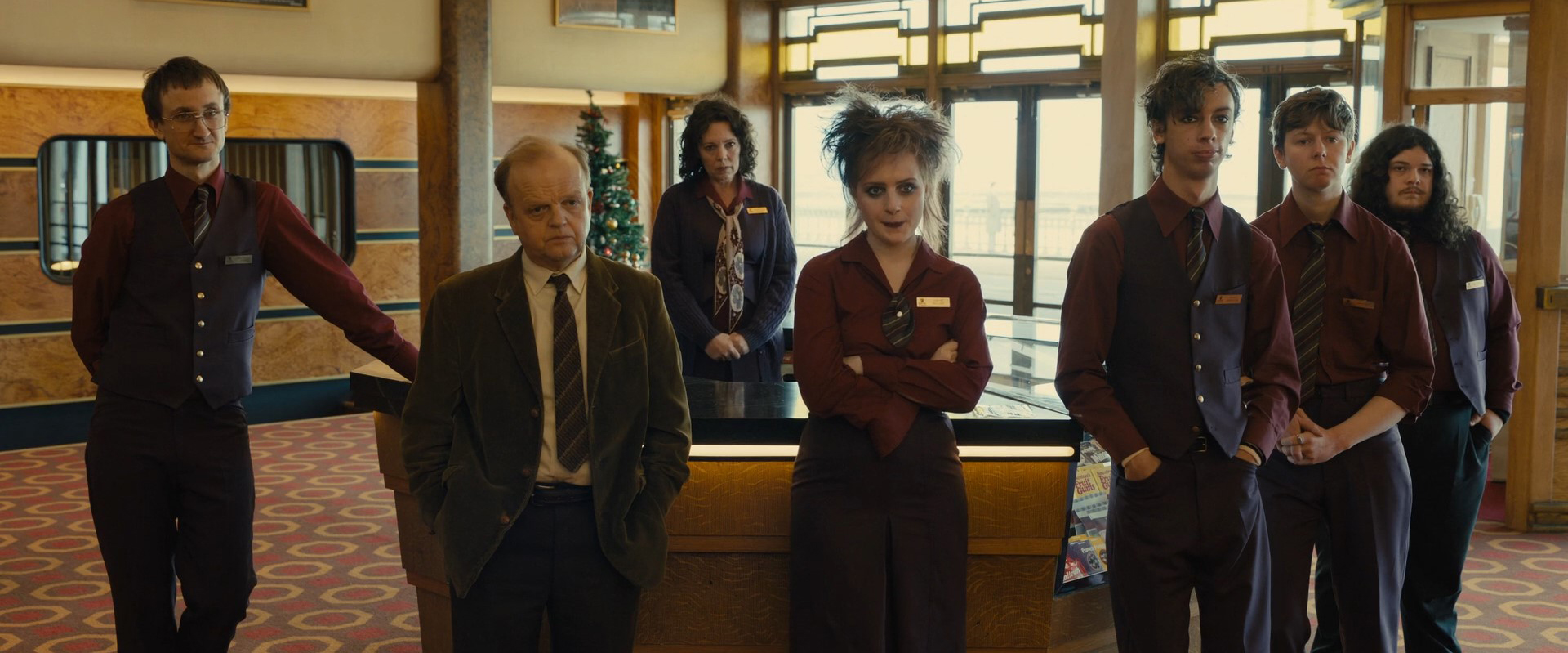
I think I have an answer. The subtle cinematography of Roger Deakins here is pure poetry—the type of literature that the protagonist Hilary likes so much. It’s the rhyming of the frames. Every one of them has its place and meaning, beautifully constructed to illuminate the story. Look at the example below. We don’t really know the main character at this point, and we most definitely haven’t heard about her schizophrenia or mood swings yet. But just through the picture’s composition, cutting her reflection in half, pills on one side of the frame and her unhappy face on the other, tells us so much within seconds.
Producing from the Front
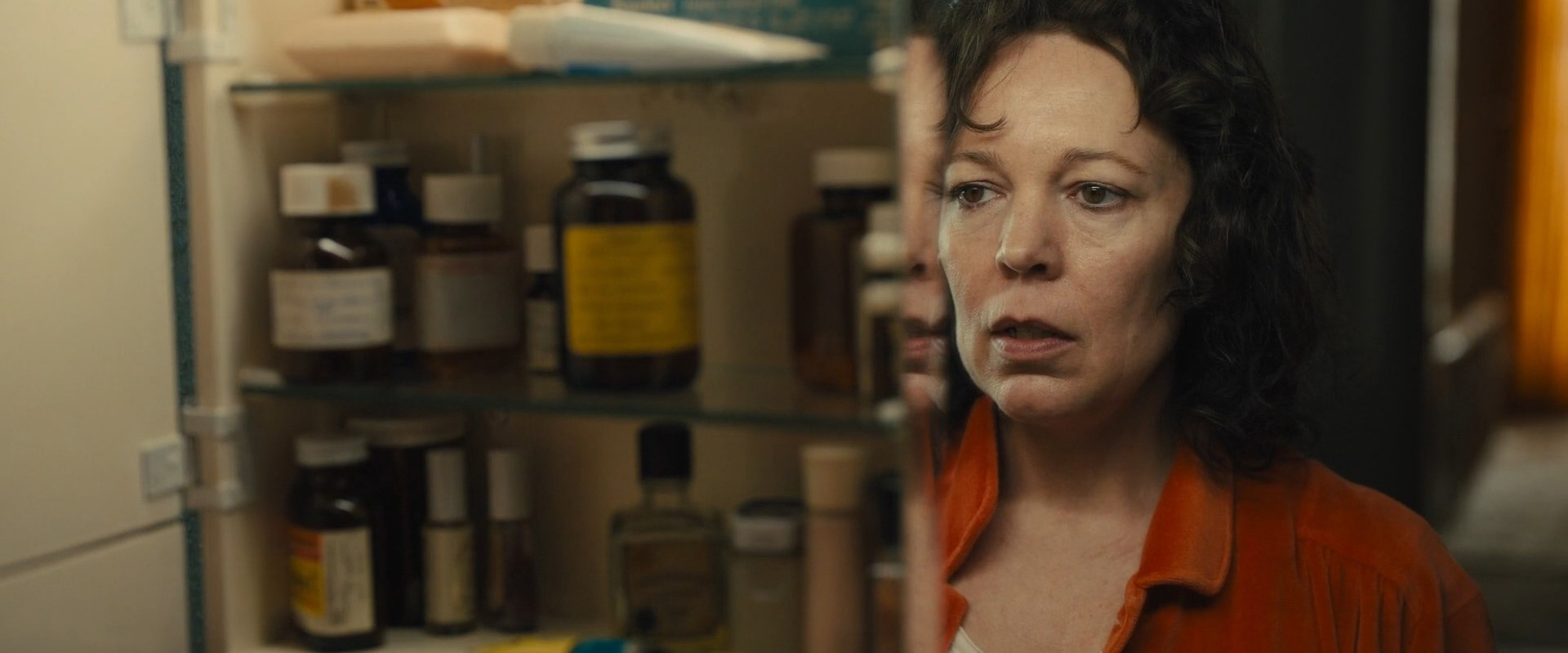
Clear and on-point framing
There are a lot of mirrors in this film, as well as shots through windows and glass doors. It looks like a consistent pattern: an ongoing reflection not only on Hilary’s self-perception but on the cinema as a medium—what it does with us, and how close it comes to actual life.
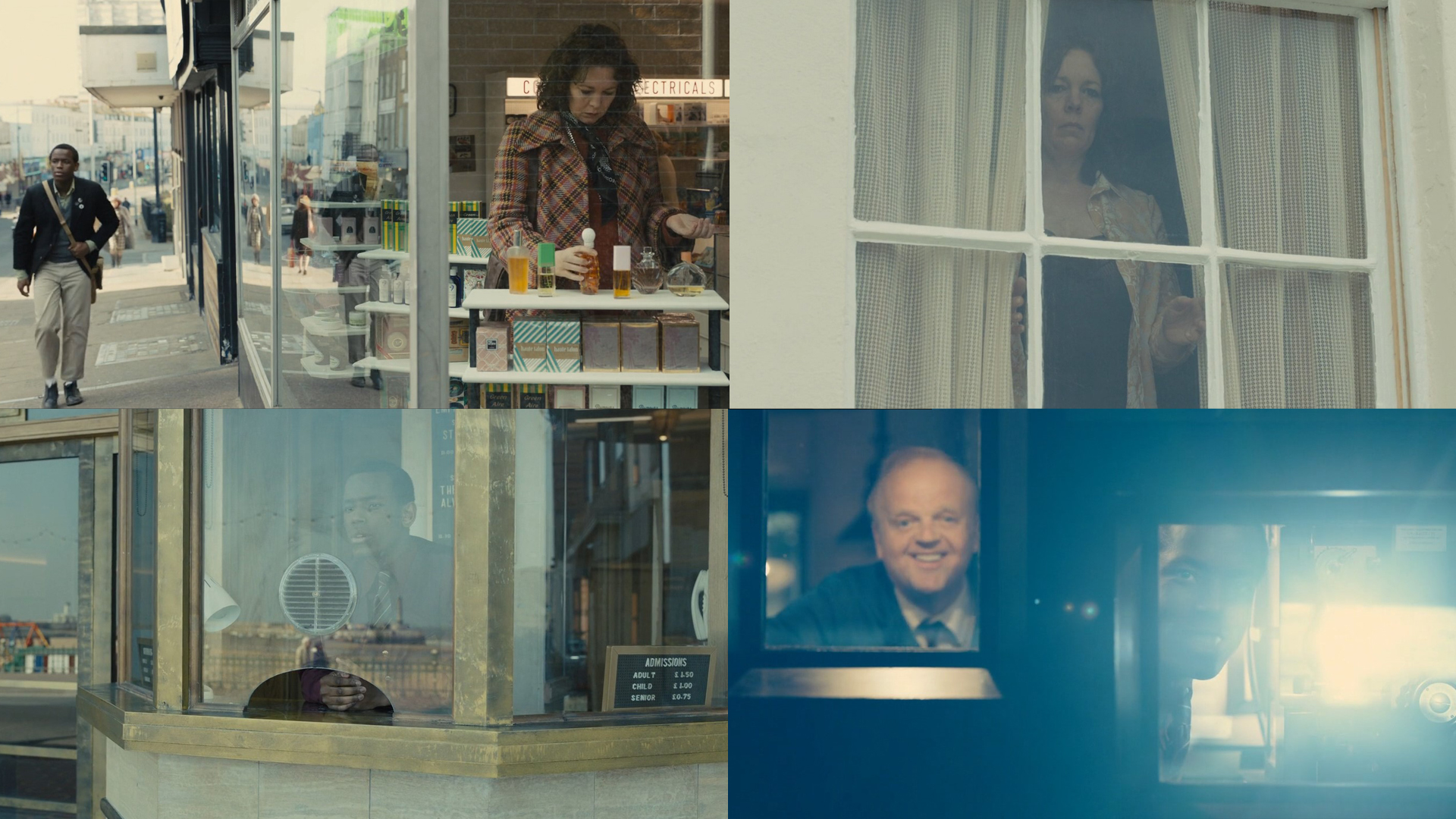
Another powerful element of Deakin’s visual grammar is where he places the characters within frames.
The way she (Hilary) is pitched against the larger world, alone in large spaces, or held behind glass or within the cube of the concessions stand—in a private world, detached from people. Stephen breaks through that wall, and we watch her exhilarated rise and then her descent into darkness.
Sam Mendes, a quote from the interview with ASC
Although “Empire of Life” uses the wide Cinemascope aspect ratio, Roger Deakins often locks characters between bars, lines, or other geometrical frame elements. Most of the time, they get little space and air to breathe as the story moves forward, so an occasional open composition provides relief to the spectator, manipulating the highs and lows of our emotional response.
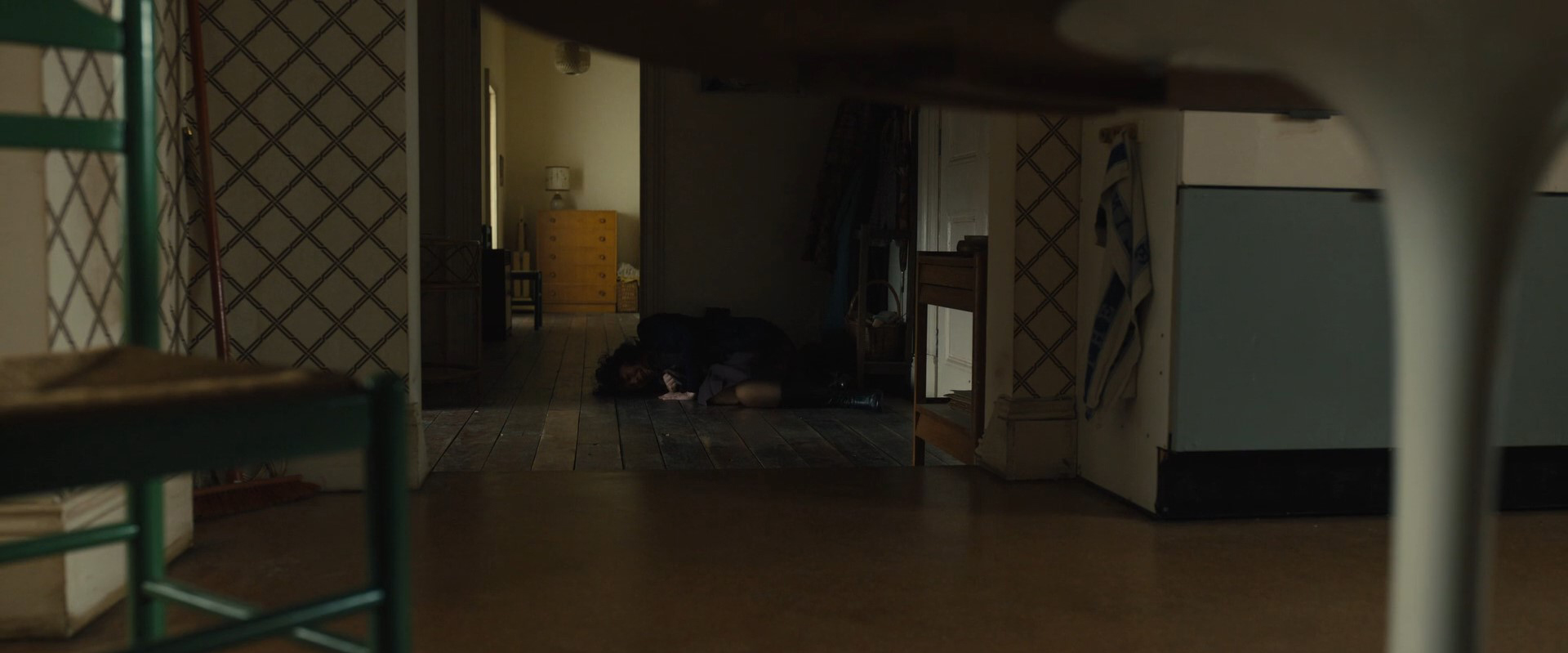
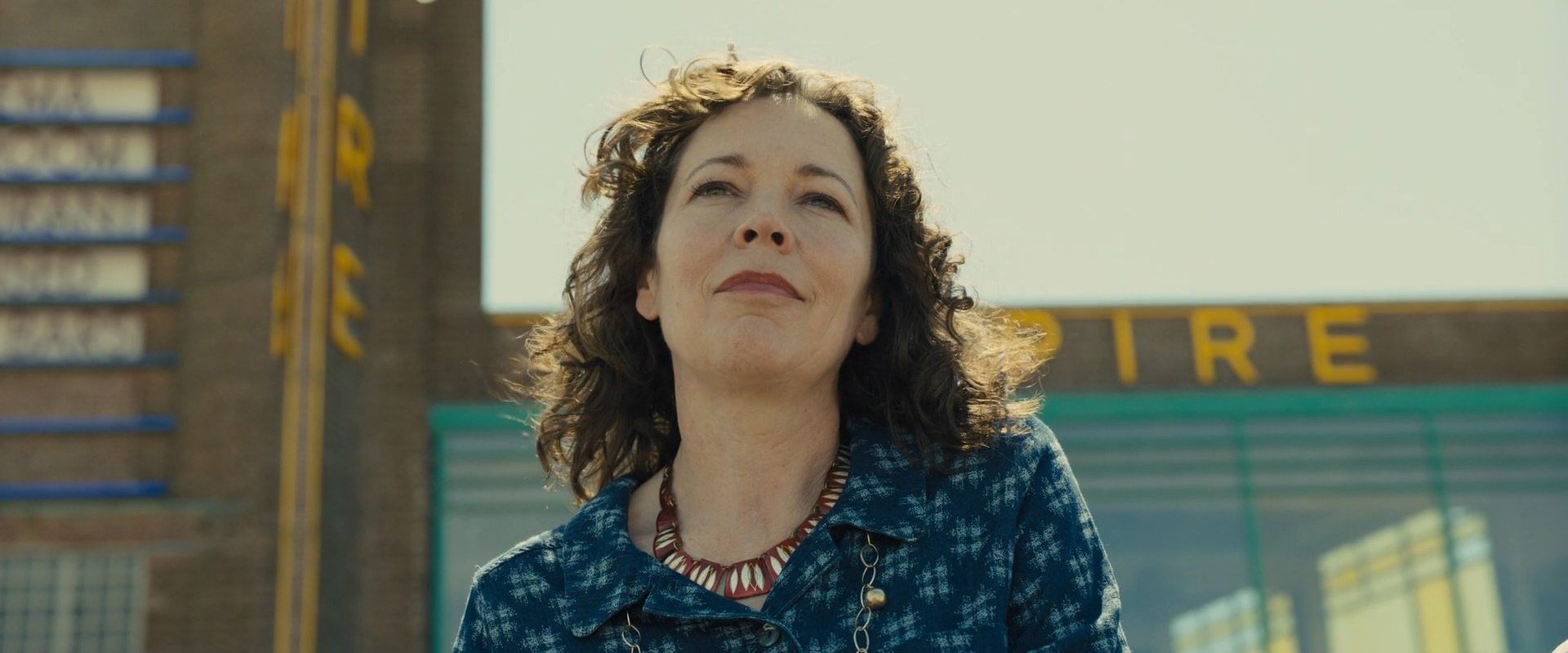
Throughout the film, the cinematographer uses the same ARRI Alexa Mini LF with his favorite ARRI Signature Prime lenses. He calls them the cleanest he could find. And, in some way, that is also a keyword for “Empire of Light”. Mendes and Deakins speak with clear, powerful pictures. They don’t try to impress the audience, but they definitely get under our skin.
Two worlds – two color schemes
What also works beautifully in the subtle cinematography of Roger Deakins is his approach to the colors. He doesn’t want to paint with a thick brush, so he reaches for small yet powerful tools, like setting the contrast between the interior and the exterior settings. While the Empire cinema theater is a warm and safe space for Hilary—the only place where she has friends and support—the outside world is a harsh, gray, and cold ocean, where she feels mostly lonely and alien.
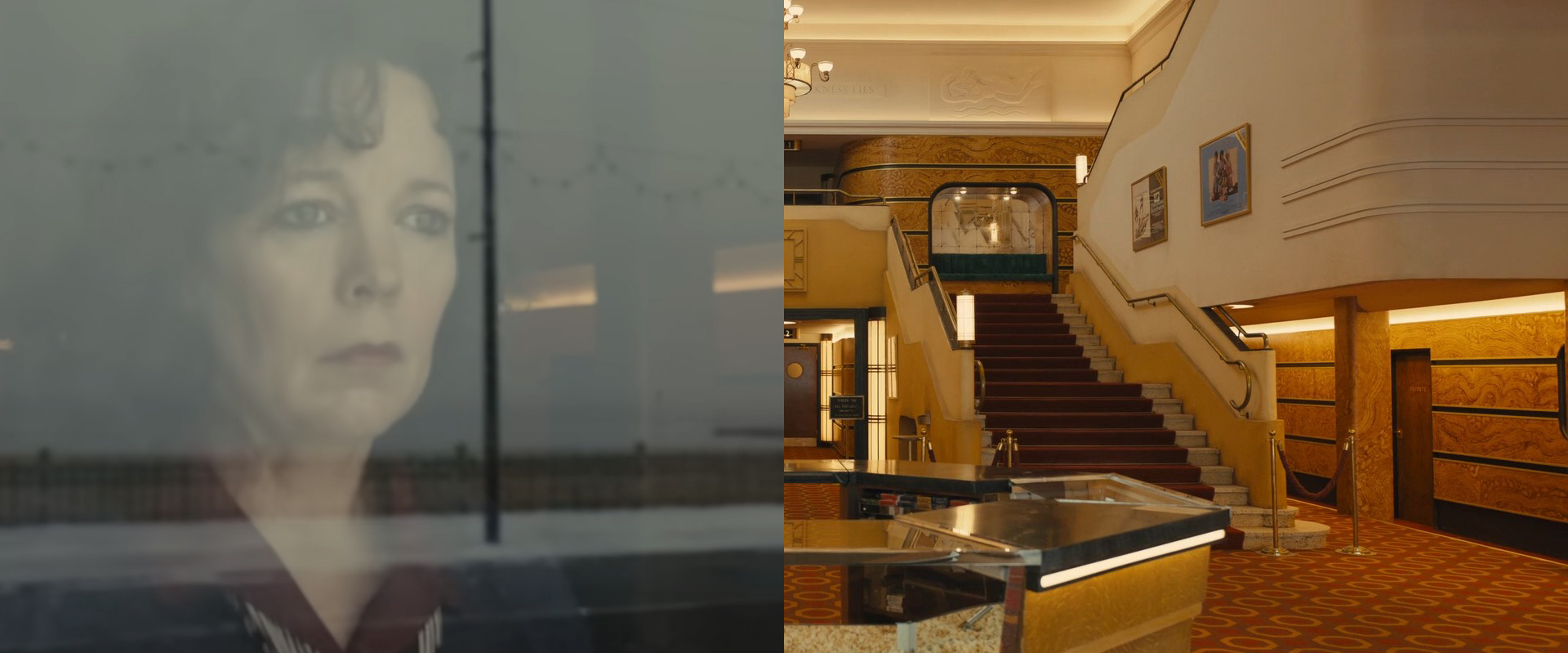
To achieve the precise look, as Deakins explains, he chose to do nearly all interior lighting with LEDs, giving him total control of the light without the color shifting, as would happen with tungsten bulbs.
Genuine lighting in the subtle cinematography of Roger Deakins
If you have followed Deakins’s work or ever listened to the Team Deakins podcast, you would know that the cinematographer always tries to get everything in-camera. His hands-on approach also extends to complicated effects. For example, let’s take the visually remarkable scene where Hilary and her young cinema employee Stephen celebrate the new year on the roof.
The easiest way to light this setup and still get the primary focus on the fireworks would be to add the pyrotechnic sparks through CG afterward. It was even part of the discussion, as Roger admits in one interview. But for him, computer-generated fireworks would have killed the credibility of the scene, so he faced the challenge. In the end, when only the neon cinema letters cast a warm glow on the duo, the moment between them feels so intimate. And after the sparklers burst over the ocean, we feel we have set the butterflies in our bellies free.
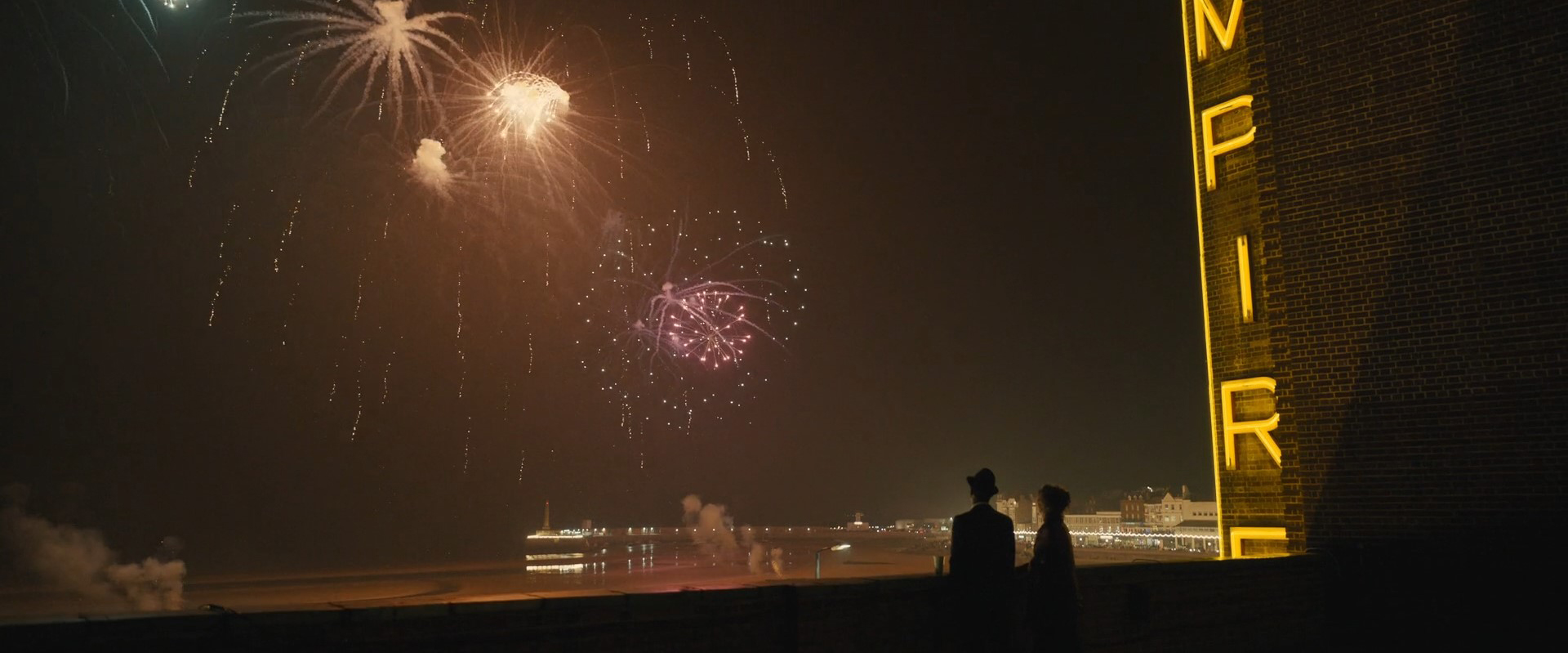
When Hilary allows herself to watch a movie in the theater for the first time, it’s a big point of relief and the emotional climax of her story. Sitting alone in the middle of the auditorium, lit only by the rays of a projector, feels like a remedy after all the pain she has gone through. The filmmakers wanted to preserve this intimate moment and make it as real as possible. Unfortunately, the light from the digital projector wasn’t bright enough, so Roger Deakins put a fake screen close to the actor’s face to capture her performance. A small, subtle change only as support for the natural lighting, and we never doubt the sincerity of the scene. It feels real because it is real.
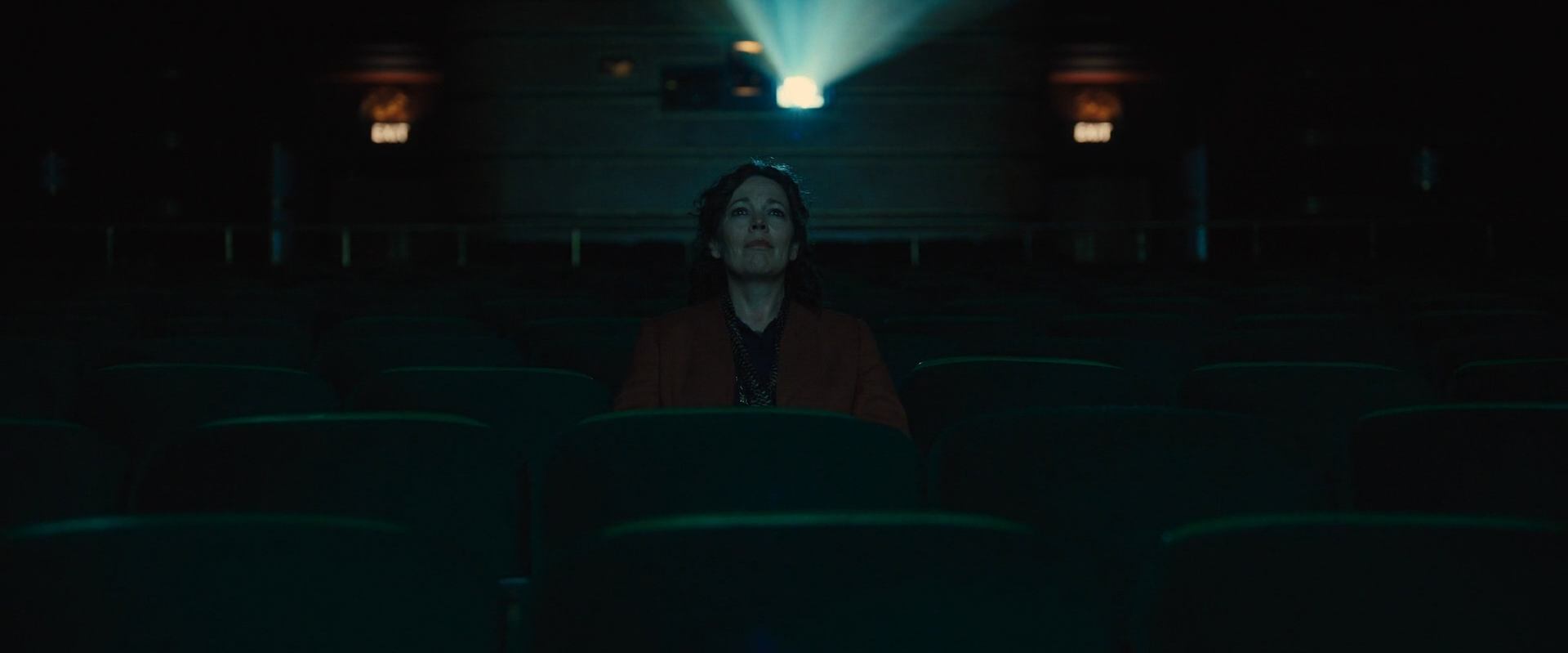
Choosing the location
As we know, Roger Deakins grew up in Devon, England, so he could relate to the location of “Empire of Light”, which story takes place in a similar small coastal town. After some scouting, he and Sam Mendes settled on the abandoned Dreamland theater in Margate. Both its exterior and some interiors looked like a perfect match for this project.
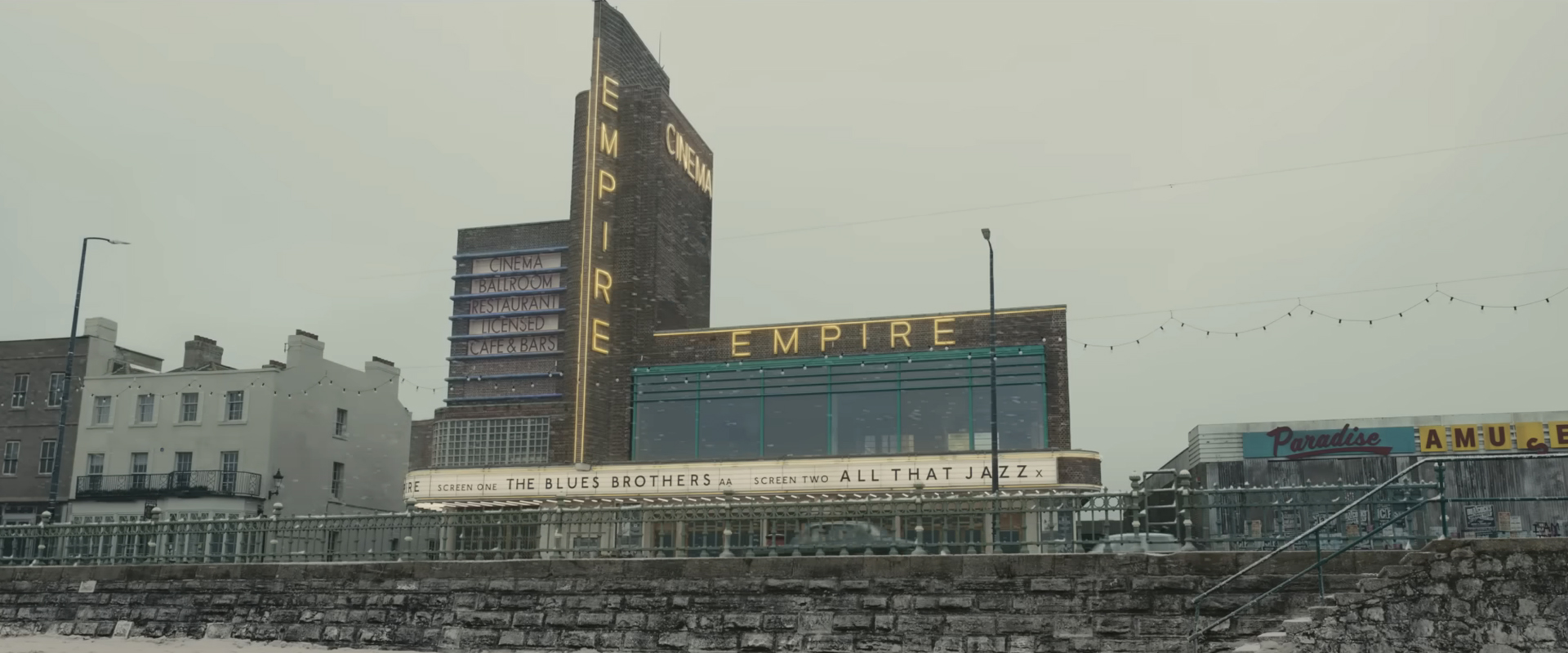
Although the main entrance and lobby were not right, Deakins didn’t want to build them as a completely separate set somewhere else. Loyal to his truthful approach, he insisted on putting them in an empty lot that they found three doors away from the Dreamlight. The view through the doors was the same, and the lobby felt completely connected to the cinema.
Conclusion
Slow pace, lots of pans from one moment to another (something you don’t see much in today’s films), utter respect for the visual grammar, and genuine lighting—these are all elements of Roger Deakins’s subtle cinematography in “Empire of Light”. As the projectionist Norman says in one scene: the cinema, this beam of light, is a perfect way to escape from life. That’s true, but also, I think it can sometimes rush us to turn our gaze inwards and reflect. What touches us? What feels relatable? How do these topics unfold in our own lives? That’s the pure magic of films to me.
How did you like the cinematography in “Empire of Light”? Can this classic visual approach compete with other great visual works like “Elvis” or “All Quiet on the Western Front”? Let’s talk in the comments section below.
Feature image: a film still from “Empire of Light” by Sam Mendes, 2022. Image credit: Searchlight Pictures.
































